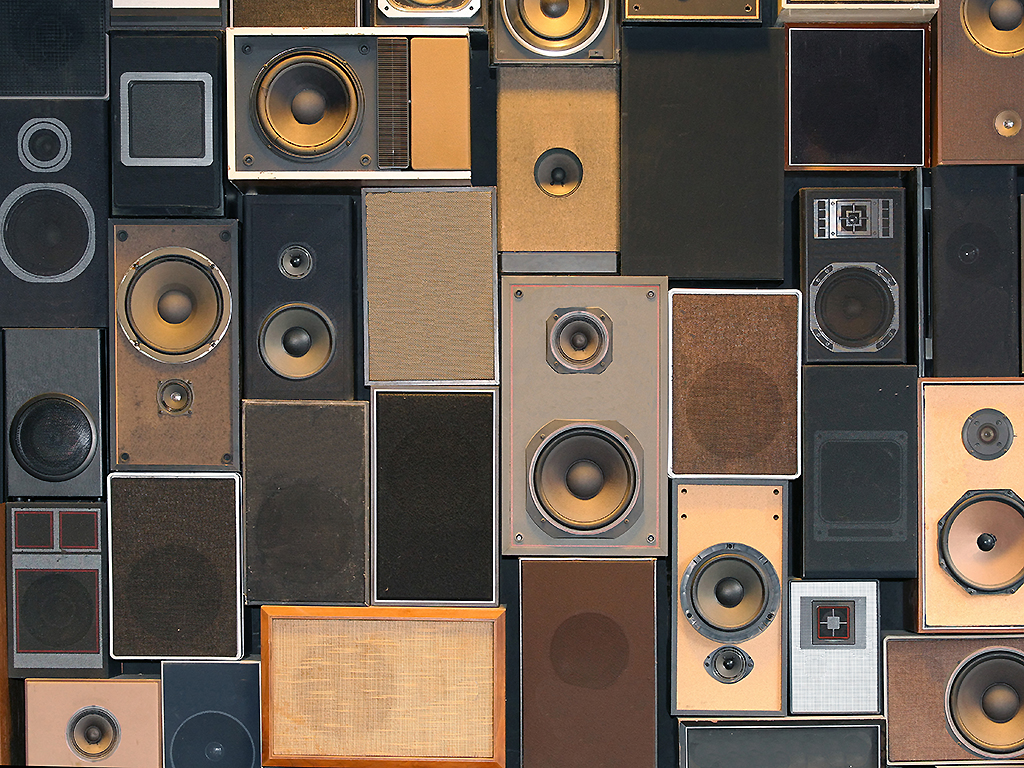I still remember my first stereo system with great fondness.

With $500 I earned from my first job at the soft ice cream parlour/pool hall in my small town, I begged my dad to take my 14-year-old self into Winnipeg to buy a stereo for my room.
Having poured over magazines like Stereo Review, brochures I got through the mail, and the annual Radio Shack catalogue, I’d finally come to terms between what I wanted and what I could afford.
Despite my parents’ begging that I spend my money on something more “sensible,” I would not be deterred. I wanted — needed — a sound system for my room and nothing was going to stop me from getting one. I’d worked for it and I’d have it.
That Saturday in June, we went to Krazy Kelly’s in the west end of Winnipeg where I picked out a Sansui 221 integrated receiver (with a whopping 12 watts RMS) for $249.99, an Akai APC-001 turntable ($99.95) and a couple of no-name full-range bookshelf speakers ($124.99).
The second I got home, I set everything up in my bedroom and began playing my record collection and haven’t stopped, really. I can honestly say that this modest system set me on the road to where I am today. That stereo led to a deeper fascination with all sorts of audio gear. That eventually led to wanting to work with this gear professionally. For me, that meant radio.
I loved my new stereo, but within 24 hours, I was already planning my next purchases. If you think Apple’s Forced Upgrade Death March is bad, you’ve never had the audiophile bug. Once infected, it doesn’t take long to develop an expensive obsession for better, clearer, louder sound.
But achieving audio perfection is impossible; you’d have a better chance of exceeding the speed of light by flapping your arms. But that didn’t stop us audiophiles from trying.
Before long, a worrisome amount of my meagre earnings started pouring into more powerful amplifiers, components with less distortion, better and better cassette decks (Dolby-A or -B or dbx?), all manner of equalizers (graphic would do, although we lusted for parametric) and several close calls with a dreamed-for TEAC 10 1/2 inch reel-to-reel with solenoid controls.
Worst of all, though, was my hunt for better speakers.
I loved auditioning speakers. When I was in high school, I’d drive into Winnipeg and spend an entire Saturday going from stereo store to stereo store, asking to listen to the best speakers they had in stock.
I learned the difference between acoustic-suspension bass enclosures and horn-loaded ones. I debated with my friends over the merits of various dome tweeters. We realized that East Coast speakers (AR, Advent, etc) were okay, but the West Coast sound (JBL and especially Cerwin-Vega) were better for rock music. English speakers — B&W, for example — were good but hard to find and hideously expensive. We agreed that Bose 901s were both overrated and too expensive.
And one day, we all swore that we’d own a set of refrigerator-sized Klipschorns or a set of Magneplanars (if we could afford an appropriately powerful amplifier, of course).
If you grew up in the 70s, you know exactly what I’m talking about. We used our stereos not just for listening to music, but as a way of proclaiming our identity to the world. High-fidelity sound was our life. It was who we were.
If you came along later — say as a child of the 1980s, 1990s, or 1900s — you’re probably wondering what was wrong with me. Nothing.
Back then, you see, music was everything to teenagers and college students. We didn’t have Walkmans or smartphones. There was no such thing as Facebook, Twitter, Instagram, Pinterest, texting, DVRs, computer games, gaming consoles, email, DVDs, Netflix, satellite radio, iTunes, Spotify, Rdio or 500-plus cable TV channels. Hell, plenty of kids didn’t even have access to rock on FM radio.
- What is a halal mortgage? How interest-free home financing works in Canada
- Capital gains changes are ‘really fair,’ Freeland says, as doctors cry foul
- Ontario doctors offer solutions to help address shortage of family physicians
- Budget 2024 failed to spark ‘political reboot’ for Liberals, polling suggests
What we had, though, was our stereos. (Later, we started buying stupidly powerful stereos for our cars, but that’s a whole ‘nother area of hurt.)
We bought lots and lots and lots of records. And we spent lots and lots and lots of money on our stereo systems. And we spent plenty of time showing everyone how loud and clear our gear was.
Sharing music meant having your friends over to sit between the speakers to listen to your latest album purchases. And the moment any record started to play, we’d start arguing about fidelity, recording techniques and the strengths and shortcomings of any audio that came through the speakers.
And then we’d critique the speakers. Distortion around the 4,000 Hz range. Over-emphasized midrange, a worrisome situation because that was a major cause of listener fatigue. Hear the buzz in the woofer at around 100 Hz? Is it the music or is that a shortcoming of the enclosure? Or is it the amp clipping?
I eventually sold the Sansui off to my friend Chris and relegated the full-range speakers to a corner of my parents’ basement where they apparently evaporated into nothingness (I still have the Akai turntable, although it’s languishing in a box in the basement).
In their place came a Denon tuner/amplifier pair and a low-end set of three-way speakers with 12-inch woofers. That set-up served me well into the 1980s.
Since then, I’ve moved through gear from Technics, Cerwin-Vega (finally!), Polk, Mission, KLH, Carver, Onkyo, Pioneer, Yamaha, Marantz, Bose, Sonance, Tannoy and a few others that I’ve forgotten. My first CD player sent me in search of speakers and amplifiers that could reproduce the new digital sound. And when subwoofers became more affordable, I got one of those, too. And then another. And another. There are now five in the house.
In the 1990s, I became distracted by the home theatre revolution and like so many purists drifted away from pure two-channel stereo, investing instead in 5.1 systems in my living room, my office, in a home gym, and my home studio.
If that wasn’t enough, I finally invested in a big, old-school stereo for listening to vinyl and CDs, consisting of components from NAD and Pro-Ject mated to a pair of PSB Totem 3s.

To complete the setup, I bought a comfy chair that’s set up in the sweet spot between the PSBs. If you’re trying to picture me listening to music, it’s kinda like this.
Overkill? Most definitely. But remember that I was infected with the audiophile bug in my early teens. There is no cure.
Alan Cross is a broadcaster with 102.1 the Edge and a commentator for Global News.
Subscribe to Alan’s Ongoing History of New Music Podcast now on Apple Podcast or Google Play






Comments